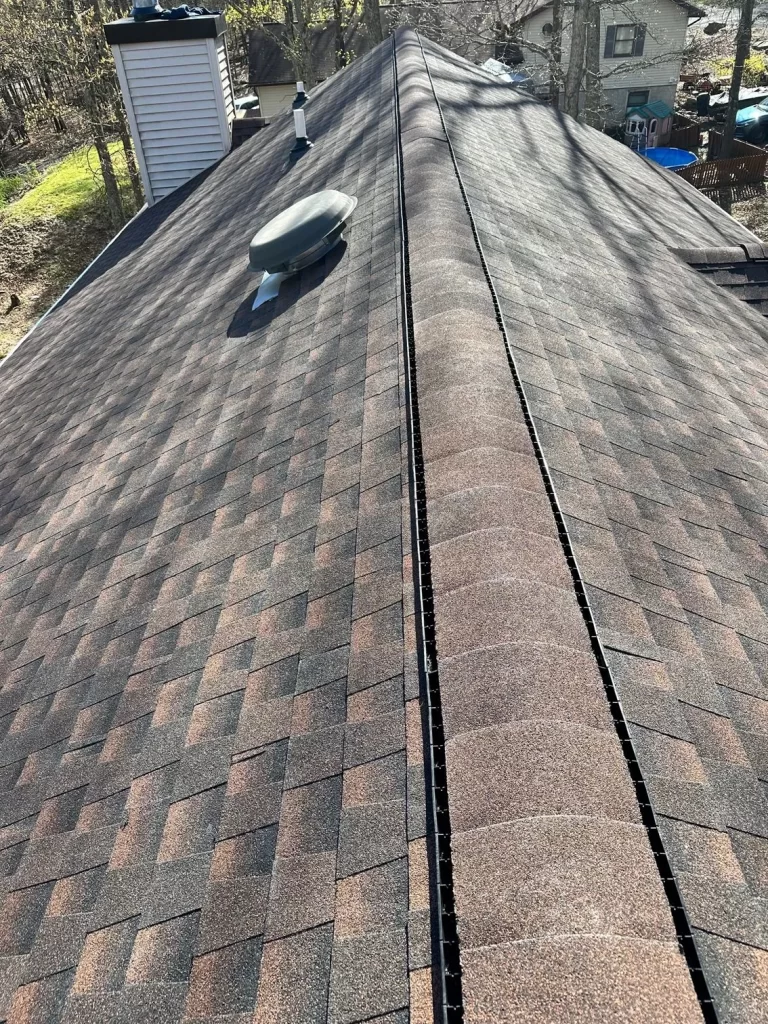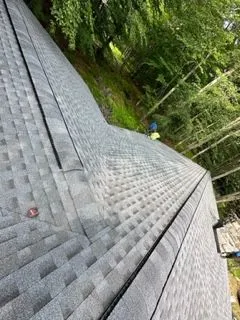#1 Roof Ventilation Strouds
ROOF VENTS AND ATTIC VENTILATION








A PROPERLY VENTILATED ROOF PROTECTS YOUR HOME
Lacking proper roof ventilation can pose a significant risk to the health of your home during routine household activities. Everyday tasks like laundry, showers, dishwashing, and cooking generate lingering water vapor that needs a route of escape through roof vents. Without this ventilation, you run the risk of detrimental consequences, such as damage to the underside of your roof, insulation rot, peeling paint, and warped siding.
To safeguard your home against moisture buildup and withstand the harsh forces of nature, a roof must have the ability to breathe. Frankie Contractor LLC, our roofing ventilation experts offer a specialized roofing system designed to endure environmental elements and optimize the advantages of adequate ventilation. Count on us to provide a long-term weather barrier and ensure the well-being of your home.
Trust Frankie Contractor LLC for professional guidance and seamless execution, addressing all aspects of your roof’s ventilation requirements from start to finish.
Ventilation Roofing Stroudsburg
With over 15 years of experience in the industry, Frankie Contractor LLC provides Roof replacement services in Stroudsburg and the Poconos region.
When choosing a contractor for downspout replacement, it’s important to consider factors such as experience, materials used, and customer reviews to ensure that you’re getting high-quality service at a fair price. Give Frankie Contractor LLC a call today 570-217-7848
Here are some frequently asked questions (FAQs) about roof ventilation:
Roof ventilation is the process of allowing air to flow freely in and out of the attic or roof space. It helps regulate temperature and moisture levels, preventing issues such as heat buildup, condensation, and mold growth.
Proper roof ventilation offers several benefits. It helps remove excess heat from the attic, preventing damage to shingles and extending their lifespan. It also reduces moisture buildup, which can cause mold, rot, and structural damage. Additionally, roof ventilation improves indoor air quality and enhances energy efficiency.
There are various types of roof ventilation systems, including ridge vents, soffit vents, gable vents, roof vents, and turbine vents. Each type has its own design and installation requirements, but they all serve the purpose of facilitating airflow in the attic or roof space.
The amount of ventilation required depends on factors such as the size of the attic, climate conditions, and the type of roof. As a general guideline, it is recommended to have a balanced ventilation system with an equal amount of intake (e.g., soffit vents) and exhaust (e.g., ridge vents) ventilation. A common rule of thumb is to have 1 square foot of ventilation for every 150 square feet of attic space.
Yes, roof ventilation can help lower energy costs. By allowing hot air to escape from the attic, it reduces the strain on cooling systems, particularly during hot summer months. This can result in decreased energy consumption and lower cooling bills.
While some types of roof ventilation systems can be installed by homeowners with basic DIY skills, it is generally recommended to hire a professional roofing contractor. They have the expertise and experience to assess your specific ventilation needs, choose the appropriate system, and ensure proper installation.
Roof ventilation systems typically require minimal maintenance. However, it is essential to keep vents free from debris, such as leaves or animal nests, to ensure unrestricted airflow. Regular inspections of the ventilation system, particularly after severe weather events, are also recommended to identify any damage or blockages that may impede proper ventilation.
Properly installed roof ventilation should not cause leaks. However, if the installation is not done correctly or if there are pre-existing issues with the roof, it is possible for leaks to occur. That’s why it’s important to hire a qualified professional to handle the installation to minimize the risk of leaks.
In many cases, roof ventilation can be added to an existing roof. The feasibility depends on the roof’s design, available space, and the specific type of ventilation system desired. A roofing professional can assess your roof and provide guidance on the best options for adding ventilation.
It’s important to note that these FAQs provide general information about roof ventilation, but specific situations may require professional advice. Consulting with a roofing contractor or specialist is recommended for personalized guidance related to your roof’s ventilation needs.

15+
Years In Business
760+
Happy Clients
1000
Projects Completed
7+
Trained Staff
Our Services
We Provide Superior Roof Installation Services
Roof Replacement
Roof replacement is a comprehensive process that entails the complete removal of your existing roof and the installation of a brand-new one. With careful attention to detail and utilizing the latest industry practices, our expert team will ensure a seamless and successful roof replacement, providing you with enhanced protection, longevity, and improved energy efficiency for your home.
Asphalt Shingles
Asphalt shingle roofing is a highly favored option among homeowners in northeast Pennsylvania due to its affordability, easy installation, and low maintenance. With its wide variety of colors and styles, it provides an attractive and cost-effective solution for enhancing the aesthetics and protection of homes in the region.
Tiles or Slate Roofing
At our company, we prioritize the use of premium concrete or clay tiles sourced from reputable industry leaders, ensuring that your home exudes a distinctive charm. With our superior materials, your home will enjoy exceptional protection, withstanding even the harshest weather conditions and granting you the tranquility and assurance you seek.
Don't Know Where To Start
Get A Solutions For All Roofing Services
We Provide The Best Roofing Services
Whether you're looking to update the look of your house or seeking a practical and resilient solution, Frankie Contractor LLC has got you covered. We've got the knowledge you need.
Lindbergh Ave, Stroudsburg, PA 18360, United States of America
Phone: (570) 217-7848
Email Address
Frankiecontractorllc@gmail.com
